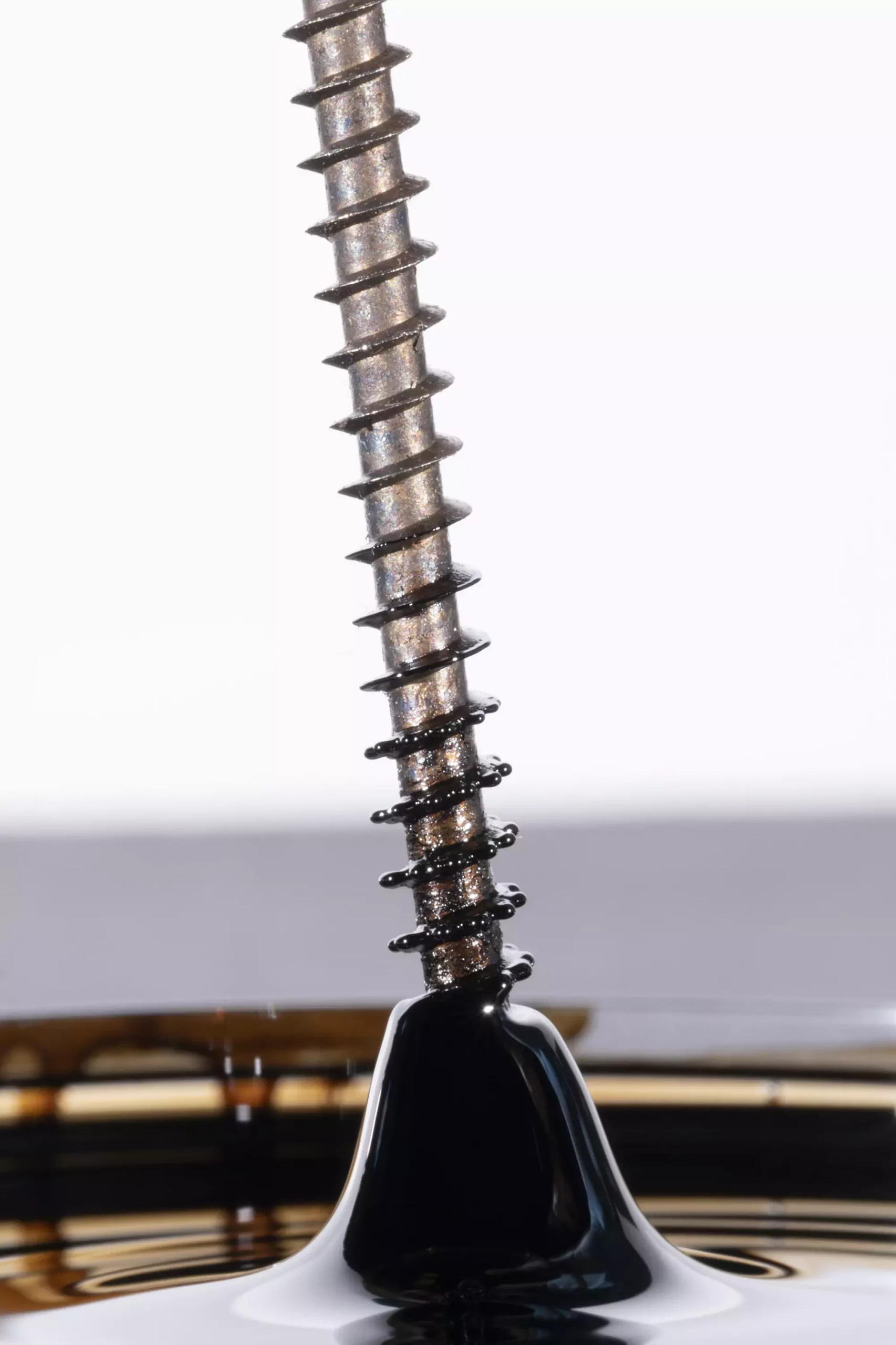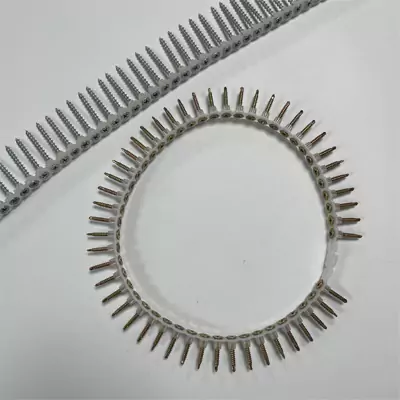caTEGORIES
Tags
Enhancing Structural Integrity with Proper Use of Drywall Screws

Posted: January 07, 2025
Categories: News
Drywall screws play a role in construction projects as they are specifically crafted to attach drywall panels firmly to the underlying structures for added strength and stability by minimizing the chances of cracks or openings in the final structures finishings. QEWIT provides high-quality drywall screws that are meticulously crafted with threading and long-lasting coatings for reliable performance.
Understanding Drywall Screws and Their Importance
Composition and Design of Drywall Screws
Drywall screws are usually manufactured from toughened steel to guarantee longevity and sturdiness. Their distinct bugle-shaped heads enable a finish without causing any harm to the drywall surface. Moreover, the sharp threads that tap themselves make it easy for them to penetrate materials such as wooden or metal studs.
The way these screws are designed greatly impacts how well they work in scenarios; coarse threaded screws are often preferred for wooden studs because they provide a strong grip; meanwhile, fine threaded screws work best with metal studs as they offer increased stability and support. The phosphate coating applied to drywall screws serves to protect against rust and corrosion, making them durable even in damp conditions.
Role of Drywall Screws in Structural Integrity
Drywall screws play an important role in maintaining the structural integrity of buildings by securely attaching drywall sheets to frames, which aims at preventing any shifting or sagging as time passes by. The precise threading of these screws helps create connections between the materials and minimizes the likelihood of cracks or gaps that could potentially weaken the overall stability of the structure.
When you install drywall screws correctly and evenly across the surface area, it helps to spread the weight and reduces strain on specific points on the walls and ceilings. This balanced distribution improves the strength and longevity of walls and ceilings in areas that receive a lot of traffic or bear heavy loads. To make sure your construction projects stay strong and look good for a time, it’s important to use top-notch drywall screws that are of high quality.
Selecting the Right Drywall Screws for Your Project
Factors to Consider When Choosing Drywall Screws
Selecting the type of drywall screws is vital to getting the best outcomes. Important considerations include the length of the screw, the threading it has, and its compatibility with materials. The screw’s length should be enough to go through both the drywall panel. It needs at least half an inch into the underlying framework. When dealing with materials or when setting up double layers of drywall longer screws might be necessary.
When choosing threads, it’s important to consider the type of material you are going to use. Coarse threads are great for wood framing because they hold tightly without causing damage, while fine threads are better suited for metal studs as they allow for insertion and lower the risk of frame damage.
Recommended Products from QEWIT
QEWIT provides a selection of dependable drywall screws designed to meet various construction requirements with outstanding performance in mind. They have a range of products crafted with threading and long-lasting coatings suitable for use in both residential and commercial projects. Look at their options for high-quality solutions that effectively improve strength.

Proper Installation Techniques for Optimal Performance
Preparing the Surface and Tools Required
Please clean your working surface before you start installing drywall screws to avoid any problems and ensure the screws work well during installation.
Please use the proper tools like a power drill or a screwdriver with adjustable torque settings to avoid overtightening the screws and causing damage. A stud finder is handy for locating the framing members to ensure that each screw is firmly secured in its place.
Step-by-Step Guide to Installing Drywall Screws
- Begin by aligning the drywall sheet against the frame or studs.
- Mark screw placement at regular intervals—typically 12 inches apart along edges and 16 inches apart in the field.
- Use a power drill equipped with a Phillips head bitto drive each screw into place.
- Ensure that the screw head sits slightly below the surface of the drywall without tearing through it.
- Continue securing all edges and corners before fastening interior sections.
- Check for any loose areas by gently pressing on the drywall; add additional screws if necessary.
Choosing the tools and using the correct methods effectively during your construction projects can ensure that your installations are flawless and enhance the strength of the structure without compromising on visual attractiveness.
Addressing Common Challenges with Drywall Screws
Avoiding Screw Popping and Overdriving Issues
Issues like screw popping and overdriving are problems that happen when installing drywall sheets. In the case of screw popping, outward screws in the drywall become noticeable over time due to placement or not going deep enough into the frame or even structural shifts triggered by environmental factors.
To prevent screws from popping out framing structures during construction work, it’s important to make sure the screws go into the material by at least 1 inch deep to secure them properly in place. It is crucial to maintain the spacing between screws. Keep them within 12 inches along the edges and 16 inches apart in the middle section. Furthermore using top-notch screws that have a grip can play a key role, in minimizing this issue.
When screws are screwed in deeply into the drywall during the installation process—an issue known as overdriving—it can cause damage to the surface of the drywall and weaken the attachment overall, which can compromise its structural integrity! To prevent overdriving mishaps from happening, please use a power drill equipped with adjustable torque settings, and be sure to stop driving once you notice the screw head sitting just slightly below the surface of the drywall without piercing through entirely!
Maintenance Tips for Long-Term Structural Integrity
To ensure the durability of drywall over time is crucial to pay attention to details and take preventive actions as needed. It’s important to check walls and ceilings that appear loose and might need additional support. If you notice any problems, please remove the impacted screws and replace them with new ones that are the right length and thread style.
In regions with humidity or frequent temperature changes, it’s advisable to utilize screws that resist corrosion to deter rust and maintain strong connections. Applying a coat of paint or sealing drywall surfaces periodically can help shield against moisture-induced harm and preserve the visual charm.
By tackling these typical obstacles, please ensure that your drywall installations will stay sturdy and visually pleasing for the long haul.
Innovations in Drywall Screw Technology by QEWIT
Latest Advancements in Screw Design
Advances in drywall screw technology have transformed the way that construction is done by improving effectiveness and making it easier to use. The latest designs include enhancements like self-tapping threads for quicker insertion and less effort during setup. These threads also decrease material movement. Help create a stronger connection between drywall sheets and the structures beneath them.
Some new advancements involve using threaded screws that have both coarse and fine threads on one shaft making them suitable for use in both wood and metal framing projects alike. This flexibility makes it easier to choose materials while ensuring a grip, in various scenarios.
Improved coatings have also become an advancement in screw design lately. State-of-the-art finishes offer enhanced protection against rust and corrosion and increased durability against wear and tear. These coatings are particularly suitable for areas that are regularly exposed to moisture or harsh conditions. As a result of these coatings’ effectiveness in preventing damage and wear, they help prolong the lifespan of screws while keeping their integrity intact over the long term.
Future Trends in Drywall Fastening Solutions
The upcoming trends in fastening solutions for drywall are expected to center around sustainability and efficiency while also being adaptable to needs and preferences in the market sector.
Cutting-edge fastening systems represent a growing trend in the industry. These systems incorporate sensors or indicators that offer updates regarding screw depth, alignment, and tension as they’re being installed. These advancements improve accuracy while minimizing mistakes often linked to procedures.
Additionally, modular fastening solutions are gaining traction in the industry. These systems allow for quick assembly and disassembly of structures without damaging components, providing flexibility for renovations or re-locations.
For cutting-edge solutions tailored to modern construction needs, please explore QEWIT’s latest offerings in drywall fastening technology. Their commitment to innovation ensures that you stay ahead in delivering durable and efficient installations across various projects.
By embracing these advancements and trends in drywall screw technology, you can optimize your construction practices while meeting evolving industry demands effectively.


